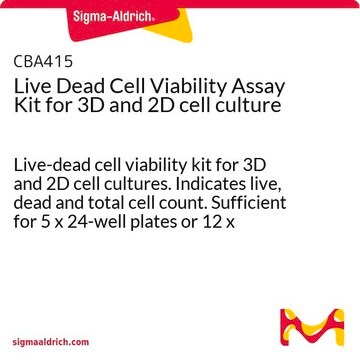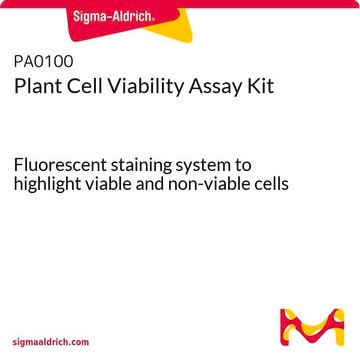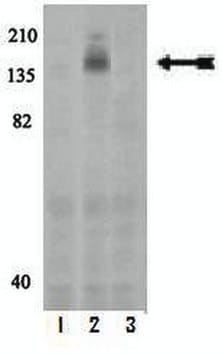This product requires preparation of a cell suspension and has not been validated for bacterial biofilms or cells attached to any surface.
04511
Live/Dead Cell Double Staining Kit
suitable for fluorescence
Synonyme(s) :
Staining kit for live/dead cells
Sélectionner une taille de conditionnement
Sélectionner une taille de conditionnement
About This Item
Produits recommandés
Application
Composants de kit seuls
- Solution A (Calcein AM solution) 4 × 50
- Solution B (propidium iodide solution) 300 μL
Produit(s) apparenté(s)
Code de la classe de stockage
10 - Combustible liquids
Classe de danger pour l'eau (WGK)
WGK 2
Point d'éclair (°F)
185.0 °F - closed cup
Point d'éclair (°C)
85 °C - closed cup
Faites votre choix parmi les versions les plus récentes :
Déjà en possession de ce produit ?
Retrouvez la documentation relative aux produits que vous avez récemment achetés dans la Bibliothèque de documents.
Les clients ont également consulté
Articles
Tests sur cellules pour l'étude de la prolifération (BrdU, MTT, WST1), de la viabilité et de la toxicité cellulaires pour la recherche sur le cancer, la recherche en neurosciences et la recherche sur cellules souches.
Cell based assays for cell proliferation (BrdU, MTT, WST1), cell viability and cytotoxicity experiments for applications in cancer, neuroscience and stem cell research.
-
Can this kit be used to assess cell viability within bacterial biofilms?
1 réponse-
Utile ?
-
-
Can the live/dead double staining kit be used on fixed cells?
1 réponse-
The kit is not designed for use with just dead cells. When cells are fixed, it typically results in cell death for all cells. Consequently, if all the cells are dead, it is expected that the Calcein AM would not be able to enter the cells, as Calcein AM is not a fluorescent molecule. The available data sheet states, "While the cells are viable, the calcein generated from CalceinAM by esterase in a viable cell emits strong green fluorescence (excitation: 490 nm, emission: 515 nm)." Therefore, Calcein-AM only stains viable cells. If all the cells are dead, the only observed staining will be from the Propidium Iodide - which is the dead cell stain reagent in kit 04511.
If the cells are stained while viable, it is possible to image the cells after they have been fixed in paraformaldehyde or other fixatives. Although this is a common practice in some laboratories, It's suggested to consider a 10-minute fixation instead of 30 minutes, as fixing for 30 minutes may not be advisable.Utile ?
-
-
How many assays or tests can be conducted using one kit of PN: 04511-1KT-F?
1 réponse-
The 04511 kit consists of 2 components, with reagent B being the limiting reagent, requiring just 300 microliters of reagent. To prepare the staining solution, 10 microliters of Reagent A and 5 microliters of Reagent B are mixed with 5 ml of PBS. Each test necessitates 100 microliters of the staining solution. With 5 microliters of Reagent B being sufficient for 50 tests, 300 microliters of Reagent B is adequate for 60 batches of the staining reagent, resulting in 3000 tests (50 x 60). Although the maximum number of specimens might not always be stained in practice, the kit theoretically should allow for 3000 tests.
Utile ?
-
Filtres actifs
Notre équipe de scientifiques dispose d'une expérience dans tous les secteurs de la recherche, notamment en sciences de la vie, science des matériaux, synthèse chimique, chromatographie, analyse et dans de nombreux autres domaines..
Contacter notre Service technique










